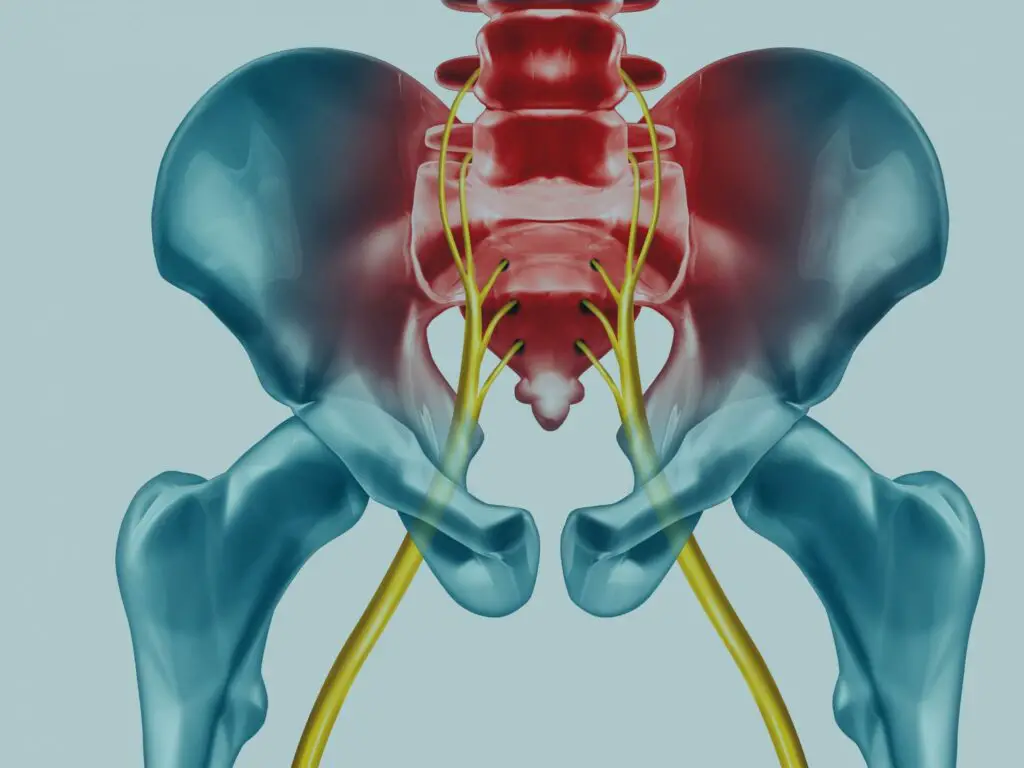These exercises are some of the most common that I give to my patients. They are simple to do, safe, and effective when done correctly and with the right dosage.
The good news is that you only need to avoid activities that make your lower back symptoms significantly worse. The even better news is that you only have to avoid these for a short duration of time. It’s recommended that within 2-3 days of experiencing discomfort and pain that you should try to get back to normal activity as you feel capable, even if there is some discomfort.
If you’re a weightlifter, here’s an article about low back pain I wrote specifically for you.

Red flags to look out for:
- progressive (and worsening) numbness, tingling, and weakness in one or both legs
- difficulty with urination or defecation
- Severe pain in all positions that does not get better regardless of what you try
Important information
There is no bad exercise only the exercise you are unprepared for. Too many articles at the top of google would have you believe that there is a specific exercise is categorically bad or wrong. This simply is not true.
It is true that you might have pain with a certain exercise. This means it might not be great for you at this point in time. It is my belief that instead of avoiding activity, we should find a way back to it.
Crunches

Many articles at the top of google tell you to avoid crunches and replace them with other exercises like planks. While this is a fun suggestion of an exercise modification, there is no need to fear crunches.
Yes, they may put a little bit more compressive load on the spine, but compressive loading of the spine is not dangerous. In fact, gravity is always compressing our spine, aside from when we are laying down, or hanging upside down.
Sometimes compressive loading with crunches is uncomfortable, however as I stated above, this doesn’t mean these movements need to be avoided forever, but rather modified. You can read this article to learn the eight different methods to modify your exercises for less pain and more gains.
If you do decide you’d like to do crunches, a simple modification is to slow the movement down and only try to get your shoulder blades partially off the ground.
Hold in the “up” position for approximately 2 seconds and then slowly “uncurl.”
Keep doing these reps until you feel a moderate burn in your abs.
If performing crunches makes your symptoms worse, you can modify or choose a different abdominal exercise. There are dozens to choose from.
High-impact Activities

Jumping, sprinting, sports, and other plyometric activities do indeed place more compressive loading through your entire body including your spine.
But, as discussed earlier, compressive loading is not some boogeyman that we need to be afraid of.
Rather, we can adjust our jumping, sprinting, and other high-impact activities and do them at a lower intensity level until you’ve found a level at which symptoms are not irritated.
This is the name of the game. Find an intensity of activity that you can do consistently without making symptoms significantly worse.
Running

Running, particularly downhill is quite an intense activity and i’d likely include this as a “high-impact” activity, indeed.
As with any activity, as discussed above, aim to reduce your intensity and volume, intensity being your pace and the percent grade you are running, and volume being the frequency and duration of running (how many days x time actually running).
Manage these closely and see if there is any correlation between intensity (speed), and discomfort. There generally is.
Biking Off-road (AKA Mountain biking)

I laughed when I saw this one on the list of one of the top articles. Mountain biking while strenuous and bumpy to say the least likely produces much lower spinal impact than all of the other methods of exercise listed above.
While you can have quite a bit of jarring that accompanies a trail ride, there isn’t anything inherently bad about this.
Use the same logic as above. Monitor your volume and intensity and progress from there.
Lifting Heavy Weights

This one really grinds my gears. In popular culture, people have been indoctrinated to believe that lifting heavy weights is somehow injurious to the lower back.
Yes, if you don’t warm up, and you try to max out a deadlift or heavy squat without any training you’re likely to strain something. Guess what, this will probably happen if you play softball, volleyball, a strenuous hike, a run, etc.
Our body adapts to the stresses that we place it under and lifting heavy weights is something that our body can adapt to.
In fact, it is of my opinion that everyone should strive to be able to lift heavy weight (relative to their bodyweight), in order to make themselves for more resilient. I recently wrote another article about that here, that goes into a bit more detail about that.
If heavy weights are what caused your lower back pain or you are afraid to do it, then you can always build back up.
In life, generally, the things we avoid are the things that we desperately need to do.
Walking (one of the best types of exercise for lower back pain)
Walking is a great, low-effort way to improve your overall cardiovascular health. Most Americans, in fact ~ 70% of y’all aren’t getting enough physical activity. Walking more could be the greatest antidote to this.
Even if you only walk for an additional 10-15 minutes a day, it’s worth it.
Determining what your barriers are to walking, and then making it a part of your daily routine is of incredible importance.
Swimming
Swimming is a great way to reduce the overall impact if that seems to be an issue for you. Not everyone has access to a pool, but, if you do, this will give you another way to increase your activity levels while keeping your symptoms low.
That is the name of the game. Keep up your activity levels, manage your symptoms, don’t panic, and give it time.
Generally, freestyle and backstroke feel the best, however, if butterfly and breaststroke feel okay, then you can go ahead and try those too.
Stretches
There are endless numbers of stretches that people suggest. The fact of the matter is that you just need to find a couple that feel good to you. Everyone is a little different, and just like everyone else in life, there isn’t an easy button.
What’s more likely is that you’ll have to test out several different variations and see which ones you enjoy the most.
Here’s a video that I made that could help you along with that process.
Other Exercises
If that last video tickled your fancy, here is another video with around 11 different exercises that you can try. I recommend trying one at a time (per day), and seeing which one feels best. Once you’ve found one that works for you, keep doing that one.
You can then slowly integrate some new ones over the course of several weeks.
Check out that video, here.
Summary
- There are no bad exercises only those that you are unprepared or not conditioned well enough to do
- Just because an exercise hurts today doesn’t mean you should avoid it like the plague for the next 30 years. That doesn’t make sense. Instead, try to work it back in, but modified.
- Find the exercise that works best for you. If you can’t figure it out, hire a physical therapist to help you and skip the guess work.
